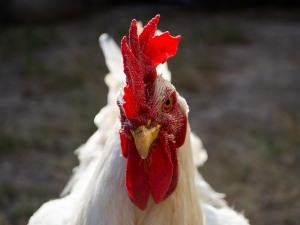
Warts that suddenly appear, whether they appear on humans or on chickens, are something to keep an eye on.
If your bird develops a wart on its beak then there is something definitely going on with your bird. This article looks into it
Table of Contents
Wart on chicken beak:
Chickens can’t talk to humans but we can get an idea of what’s going on with them by looking at their appearance, behavior, and by taking note of any growths on their skin.
Here are reasons why your bird may be developing warts on its beak:
Cutaneous papillomatosis:
If your bird’s open wounds are exposed to the papillomavirus, then the bird will develop a disease called cutaneous papillomatosis. This disease causes benign tumors, or warts called papilloma, to develop on birds.
If infected with this disease, your chicken can develop warts on its beak, the bird may also develop warts on other parts of its body like its wings, legs, feet, and eyelids.
Warts caused by this disease have a cauliflower appearance, they are raised and are fleshy in texture.
Transmission:
Thankfully, this illness cannot be passed from chickens to humans. Unfortunately, it can be passed from a sick chicken to a healthy chicken.
The virus can live outside of the host’s body for quite some time and it can stay alive on surfaces. This virus infects chickens by entering into openings, from scratches or cuts, on your bird’s skin.
Treatment options:
Try your best to keep healthy members of the flock from getting exposed, do this by isolating your sick chicken as soon as you realize that it is sick.
Also, thoroughly wash your hands after touching the sick chicken to prevent cross-contamination.
Cleaning areas that your sick chicken may have touched is highly recommended, this helps to prevent cross-contamination.
Your chicken can live a normal life even if it has a wart on its beak. However, if the wart is causing difficulty or discomfort in the bird, then you can take the bird to a vet where the wart can be removed.
Warts on your bird’s beak can be removed through surgery or chemical cauterization. If the bird has more than one wart then the bird may need several treatments to remove the warts.
Unfortunately, even though you’ve treated the bird, and removed the warts, new warts may appear.
Fowl pox:
This is another type of viral infection that can affect your chickens.
There are two types of fowlpox, dry fowlpox, which affects the bird’s wattles, comb, face, and beak, and wet fowl pox which affects the bird’s mouth, and throat.
Wet fowlpox has a higher rate of mortality than dry fowlpox, dry fowlpox has a low rate of mortality. A bird that has dry fowlpox will develop lesions on its skin, these lesions will eventually turn into scabs that can look like warts.
Transmission:
Thankfully, fowlpox can not be transferred to humans from birds so you are safe there, but this ailment can easily be transferred from chicken to chicken.
The scabs carry the fowlpox virus, if a scab falls off, and a healthy chicken picks it up and eats it, then the healthy chicken will become infected.
The scabs can also turn into a powder after falling off, this powder can get into the air and your healthy chickens can inhale this and become infected.
What to do:
The first thing that you’d need to do is isolate your sick bird. Isolating your bird will keep the rest of the flock from getting sick. The sick bird will recover, and the scabs will fall off in about 2 – 4 weeks
Apply iodine to the bird’s scabs to help them fall off quickly. To keep the infection from spreading, give all the birds water mixed with iodine. Make a solution using one teaspoon of iodine per 1 gallon of water.
Do not try to rub or remove the scabs in any way, removing them will not only be very painful to the bird, but doing this can cause a secondary infection to develop on the bird.
If the bird gets sick with a secondary infection then the best course of action would be to take your bird to the vet. The vet will prescribe antibiotics for your bird’s infection.
Make sure that your bird does not have too many rounds of antibiotics in its life, this can lead to antibiotic resistance.
If you enjoyed this article then you may also be interested in other bird related articles. Here are some articles that you may be interested in: Black Scabs On Chicken Comb, Sores On Chicken’s Comb, Lump On Chicken’s Beak,

